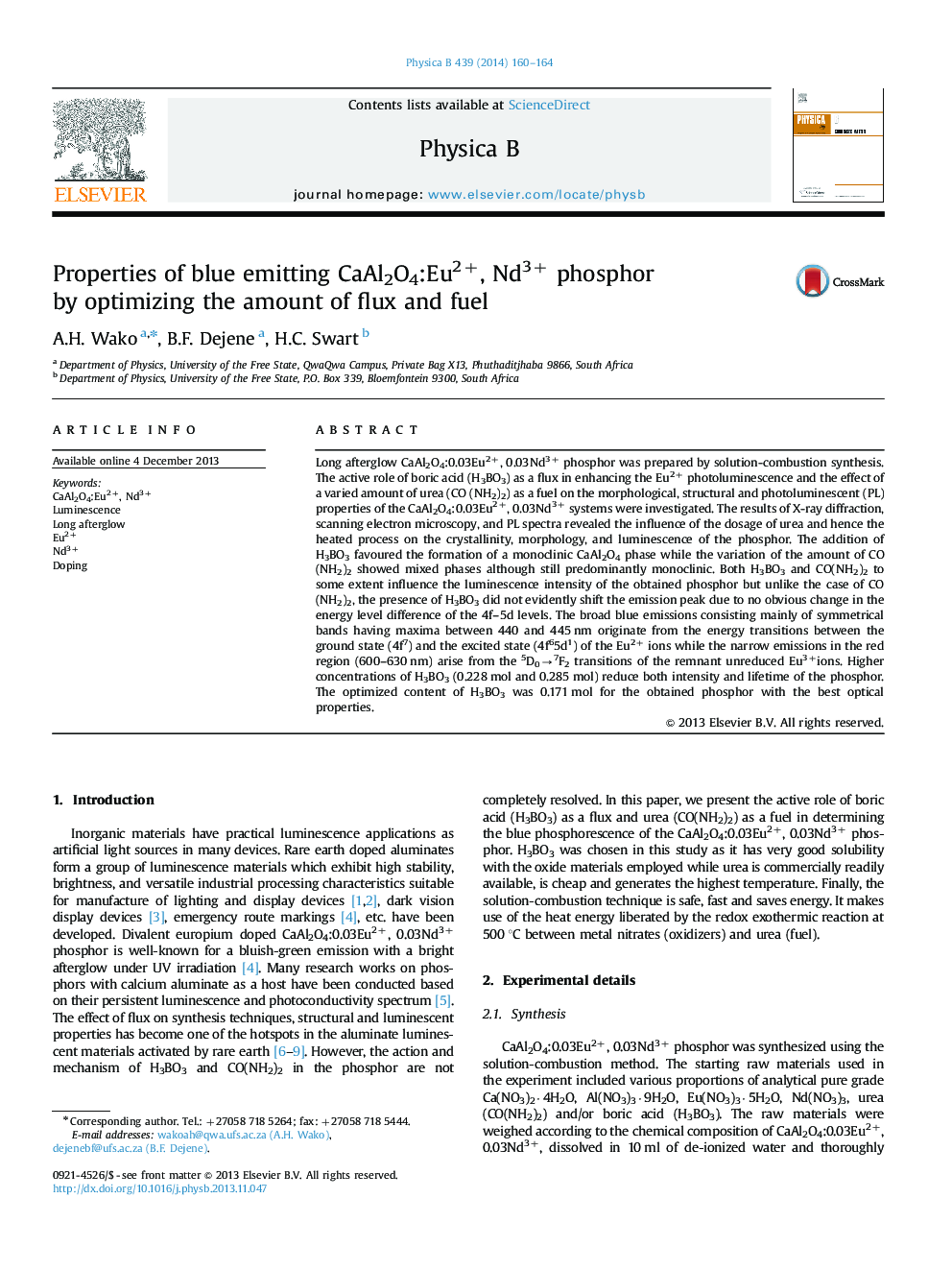| Article ID | Journal | Published Year | Pages | File Type |
|---|---|---|---|---|
| 1809688 | Physica B: Condensed Matter | 2014 | 5 Pages |
Long afterglow CaAl2O4:0.03Eu2+, 0.03Nd3+ phosphor was prepared by solution-combustion synthesis. The active role of boric acid (H3BO3) as a flux in enhancing the Eu2+ photoluminescence and the effect of a varied amount of urea (CO (NH2)2) as a fuel on the morphological, structural and photoluminescent (PL) properties of the CaAl2O4:0.03Eu2+, 0.03Nd3+ systems were investigated. The results of X-ray diffraction, scanning electron microscopy, and PL spectra revealed the influence of the dosage of urea and hence the heated process on the crystallinity, morphology, and luminescence of the phosphor. The addition of H3BO3 favoured the formation of a monoclinic CaAl2O4 phase while the variation of the amount of CO (NH2)2 showed mixed phases although still predominantly monoclinic. Both H3BO3 and CO(NH2)2 to some extent influence the luminescence intensity of the obtained phosphor but unlike the case of CO(NH2)2, the presence of H3BO3 did not evidently shift the emission peak due to no obvious change in the energy level difference of the 4f–5d levels. The broad blue emissions consisting mainly of symmetrical bands having maxima between 440 and 445 nm originate from the energy transitions between the ground state (4f7) and the excited state (4f65d1) of the Eu2+ ions while the narrow emissions in the red region (600–630 nm) arise from the 5D0→7F2 transitions of the remnant unreduced Eu3+ions. Higher concentrations of H3BO3 (0.228 mol and 0.285 mol) reduce both intensity and lifetime of the phosphor. The optimized content of H3BO3 was 0.171 mol for the obtained phosphor with the best optical properties.
